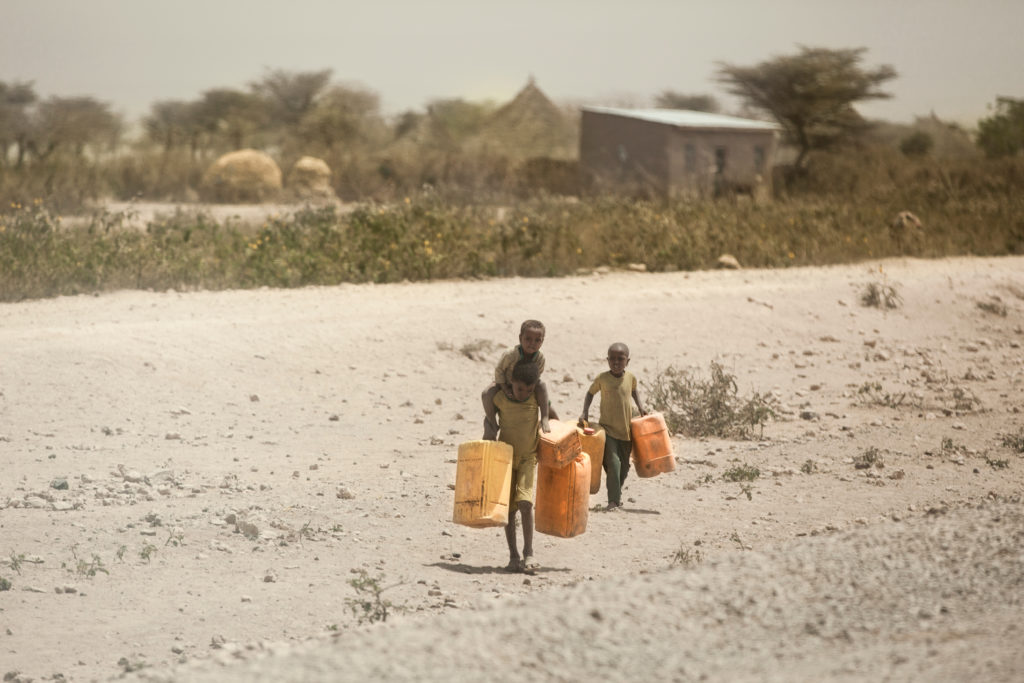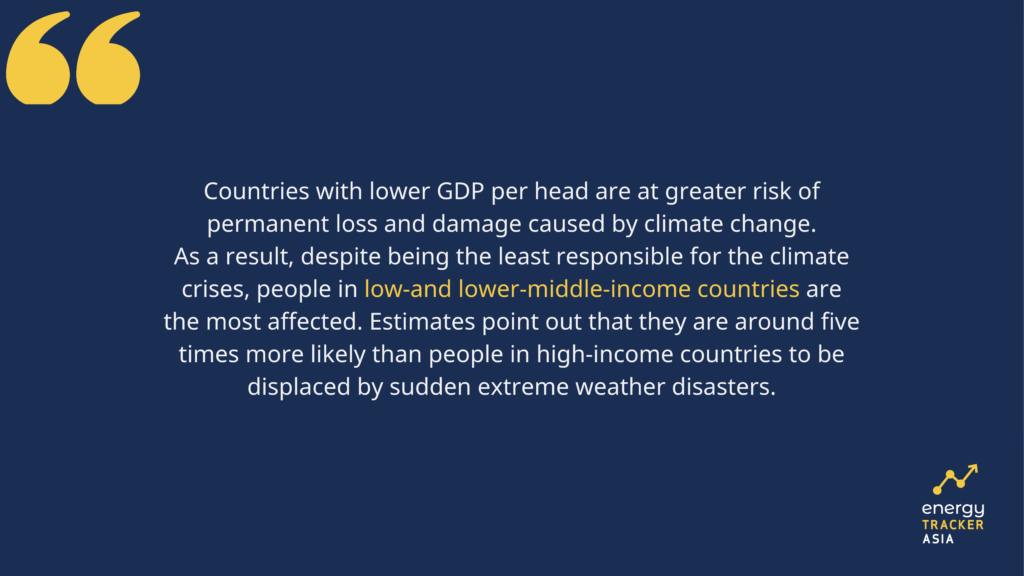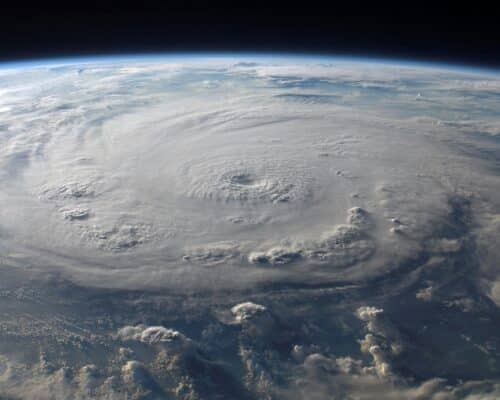Climate Change Impacts Are Worsening in 2022 and COP27 and G20 Leaders Need to Respond
Photo by Ares Jonekson via ShutterStock
06 October 2022 – by Viktor Tachev Comments (0)
The past year has probably given us the starkest reminder that climate change impacts are growing more severe by the day. Countries worldwide suffered from storms, floods, sea level rise, intense heat waves and droughts, leading to the loss of life and habitat, food and human health crises. These global warming impacts should be sufficient reasons for G20 countries to start showing tangible progress in mitigation, adaptation and loss and damage financing at COP27 and the G20 meeting. A new study adds another critical driver that will contribute to leaders’ decision-making: the financial impacts of climate change.
Climate Trends’ 2022 Report: The Latest Climate Change Impact Study
The “No Place to Hide: Tracking Climate Impacts in 2022” report by Climate Trends is a sobering reflection on the losses caused by climate change across the world.
The study covers 14 extreme weather events, which have turned 2022 into one of the most ferocious years on record regarding global climate change impacts. From the US and China to India and the Mediterranean, climate change proved it knows no borders.
“The extreme droughts in the US and Europe, the heatwaves in the UK and India, and the floods in Pakistan are stark reminders that vulnerable populations exist in rich countries too and climate change-fueled weather events will not spare any country. Losses and damages will get worse with every extra day the world continues to emit greenhouse gases.”
Friederike Otto, Senior Lecturer in Climate Science at the Grantham Institute for Climate Change & the Environment, Imperial College London
China
China experienced one of the longest and most devastating heatwaves, with temperatures reaching over 40°C for 70 days. This has affected around 900 million people in 17 provinces, leading to hydro plants and business closures. July’s high temperatures have resulted in losses of over USD 377 million, affecting over 5.5 million people.
Europe
Europe suffered the worst drought in over 500 years, placing 17% of the continent under a state of alert. The drought caused wildfires, reduced crops and disrupted Europe’s energy system.
UK
The UK experienced its first recorded temperature above 40°C. The event was so rare that meteorologists classified the heat as “exceptional”.
US
The US went through the worst megadrought in 1,200 years. In September alone, over 61 million people were under extreme heat advisories.
Japan and South Korea
South Korea saw the worst flooding in 80 years in August due to changing climate, with a month’s worth of rainfall occurring over just a few days. Losses topped USD 100 million. Weeks later, a typhoon struck the country’s south, incurring damage worth around USD 1.4 billion.
Central Tokyo experienced the longest streak of days with temperatures above 35°C since record-keeping began in 1875.
India and Pakistan
Over one-third of Pakistan was submerged due to an extreme flooding event. More than 33 million people were displaced, while the death toll exceeded 1,500. The floods came shortly after the country broke its temperature records in March, which saw 62% less rain than average.
India suffered from temperatures of 49°C in the spring and experienced its hottest March since records began 122 years ago. The month was also extremely dry, with 71% below average rainfall in the country. The heatwave affected 70% of the country.
Australia, Brazil and South Africa
The losses from the floods in Australia totalled USD 3.5 billion, one of the costliest natural disasters in the country. Australians have even been warned to brace themselves for more severe climate change effects and storms in the coming months.
Two days of severe rainfall and the resulting floods displaced over 40,000 people and destroyed 12,000 houses in South Africa. Roads, health centres and schools were also significantly affected.
Some Brazilian states saw over 70% of the rain that usually falls in May fall in just 24 hours. This led to hundreds of deaths and the displacement of over 25,000 people. In some regions, severe drought erased 8% of the agricultural GDP. The damage and crop losses exceeded USD 9.2 billion.
Global Warming and Extreme Weather Events Hit Poorest the Hardest
Scientists are clear: countries with a lower GDP per head (e.g. the least developed ones or small, developing island countries) are at greater risk of permanent loss and damage caused by climate change.
As a result, despite being the least responsible for the climate crisis, people in low and lower-middle-income countries are the most affected. Estimates point out that the people in these countries are around five times more likely than the people in high-income countries to be displaced by sudden extreme weather events. They are also more likely to suffer from excessive heat.

More disturbingly, the population in highly vulnerable regions is 15 times more likely to die due to floods, droughts, and storms compared to regions with very low vulnerability. And according to the IPCC report Climate Change 2022: Impacts, Adaptation and Vulnerability, at least 3.3 billion people are now highly vulnerable to climate change impacts.
Global Leaders are Dragging Their Feet
G20 countries and the most vulnerable countries have one thing in common: they both suffer from the effects of climate change. However, the difference is that, while the former can bear the costs, the latter can’t.
Developed countries and G20 nations are the main polluters. They emit greenhouse gases and carbon dioxide the most. As such, they have a moral responsibility to act and protect the most vulnerable ones. Even ignoring the moral factors, the world’s largest economies have to act out of self-interest, since they are facing multibillion-dollar hits due to climate disasters. The 14 events subject to analysis in Climate Trends’ study have collectively wiped out billions in terms of global GDP.
According to the OECD, the net positive impact on the’s G20 GDP when it comes to avoiding climate change-related damage will be 4.7% by 2050. The damage by 2100 could reach over 8% or double the G20’s economic losses from COVID-19.
“The scary thing is that this long list of severe impacts is what we’re seeing at just over 1°C of warming. But temperatures will keep rising, and there is a huge gap between risk and the response, even in the wealthiest countries. The G20 isn’t prepared – but it’s not too late to avoid the worst-case scenarios.”
Taylor Dimsdale, Director, Risk and Resilience, E3G
Yet, only five G20 countries have submitted new climate plans in 2022. According to Climate Action Tracker, most G20 countries don’t even have 1.5°C Paris Agreement compatible targets. Furthermore, leading emitters like India, China and South Korea fall into the “highly insufficient” category.
Prioritising Loss and Damage Financing at COP27 2022 and the G20 Meeting
If the meeting of G20 diplomats in Yogyakarta, Indonesia, at the end of September is anything to go by, the indications are that the climate crisis is taking a back seat in light of the war in Ukraine and the resulting food, energy and economic instabilities.
However, it is necessary for G20 countries to start leading by example – first at COP27 and then at the G20 meeting by achieving actual progress on decarbonisation and climate finance for mitigation, adaptation and loss and damage. The UN, alongside experts from vulnerable regions like South Asia, are already ringing the alarm on the importance of loss and damage financing. Developed countries like Denmark and Germany are already stepping up in their efforts ahead of COP27 Egypt. However, the topic of loss and damage is still just a provisional agenda. According to experts, any country can veto it and make the entire dialogue a failure.
Such a situation would be a devastating blow to vulnerable countries worldwide and another reminder that they would have to deal with climate change impacts alone. According to estimates, the projected total economic cost of loss and damage for developing countries alone by 2030 is between USD 290-580 billion. By 2050, it will top USD 1.1–1.7 trillion.
In the words of UN Secretary-General Antonio Gutteres, “If one-third of G20 countries was under water today, as it could be tomorrow, perhaps they would find it easier to agree on drastic cuts to emissions.” It would be best for everyone not to wait and find out the hard way.

by Viktor Tachev
Viktor has years of experience in financial markets and energy finance, working as a marketing consultant and content creator for leading institutions, NGOs, and tech startups. He is a regular contributor to knowledge hubs and magazines, tackling the latest trends in sustainability and green energy.
Read more



